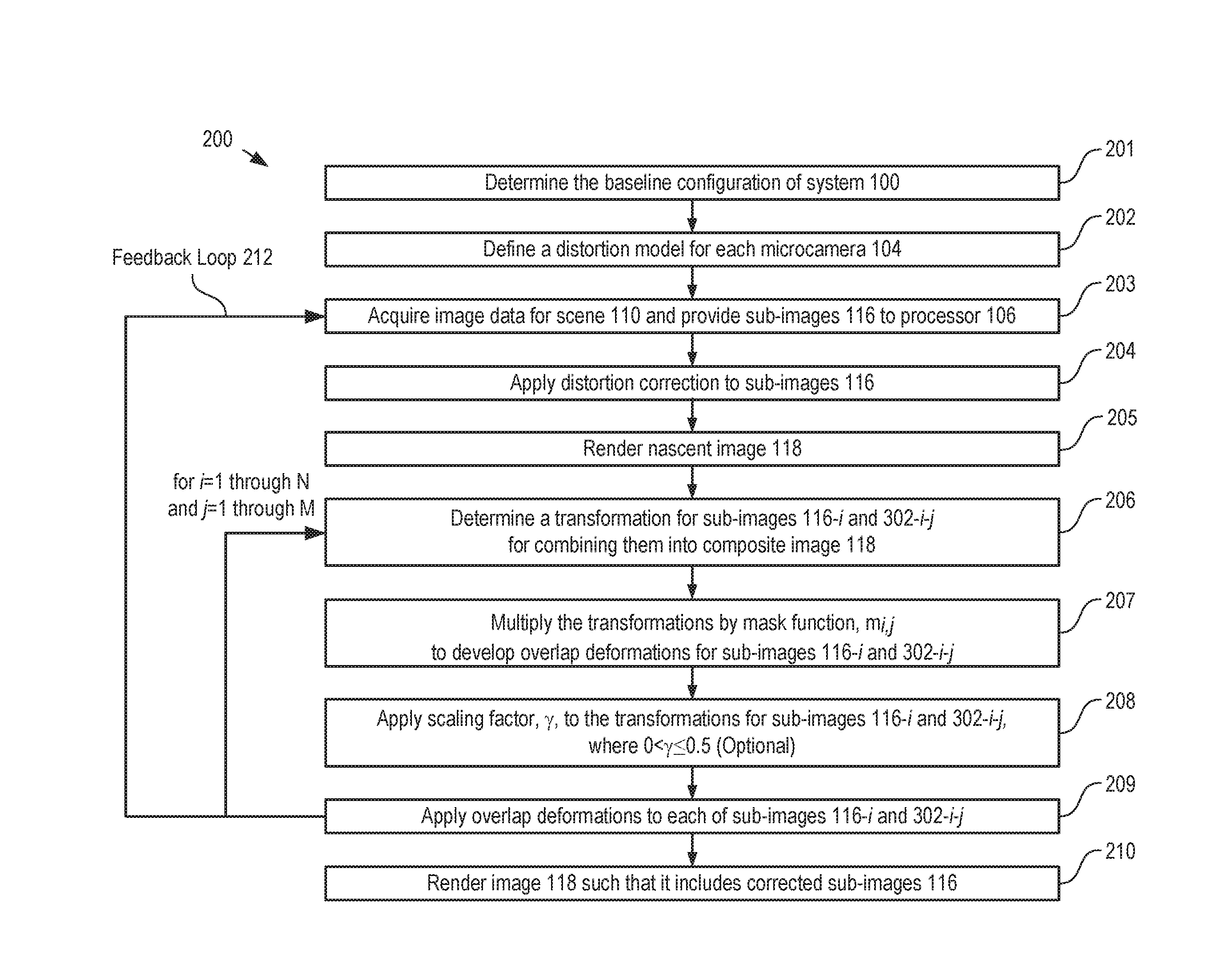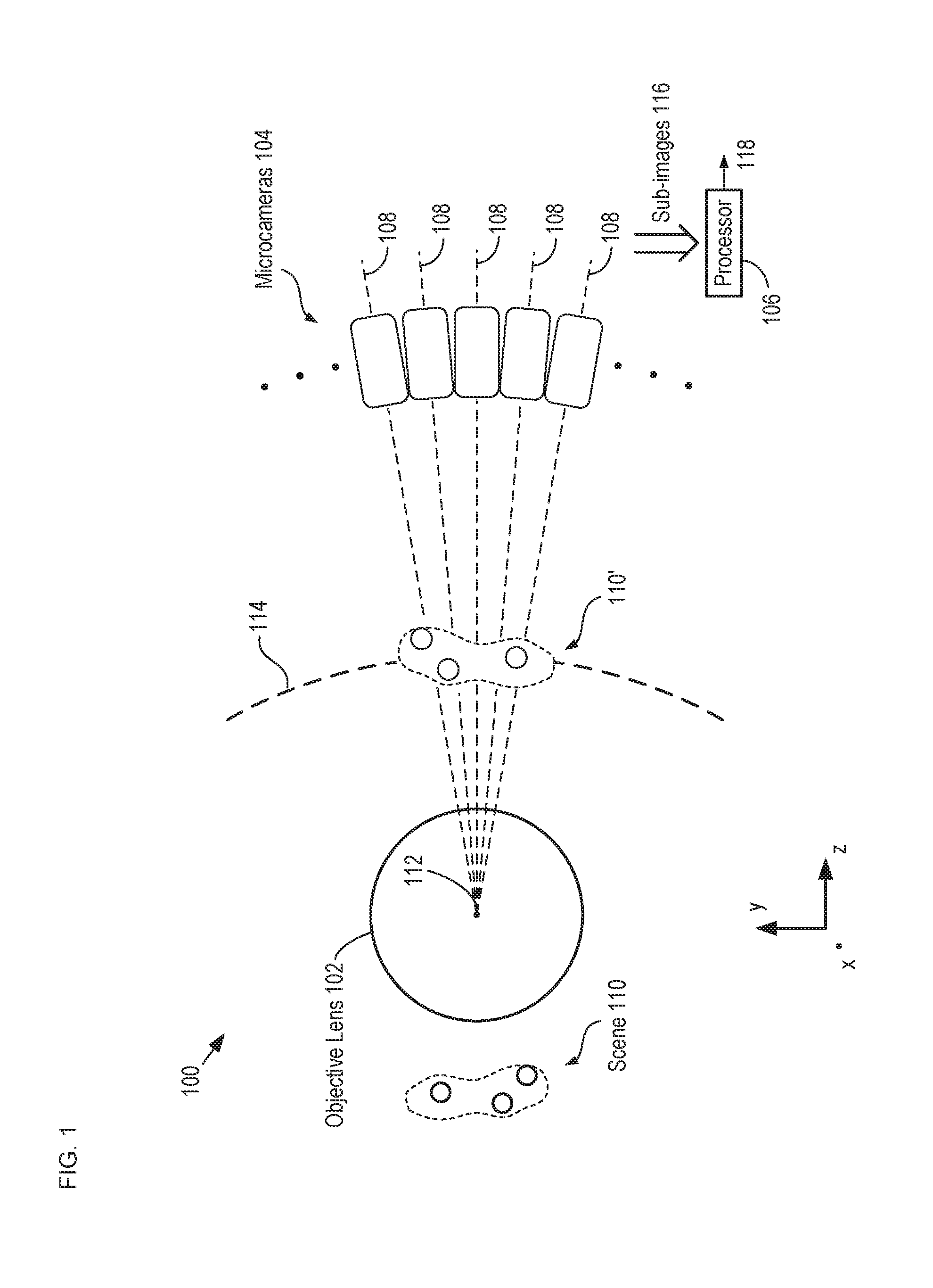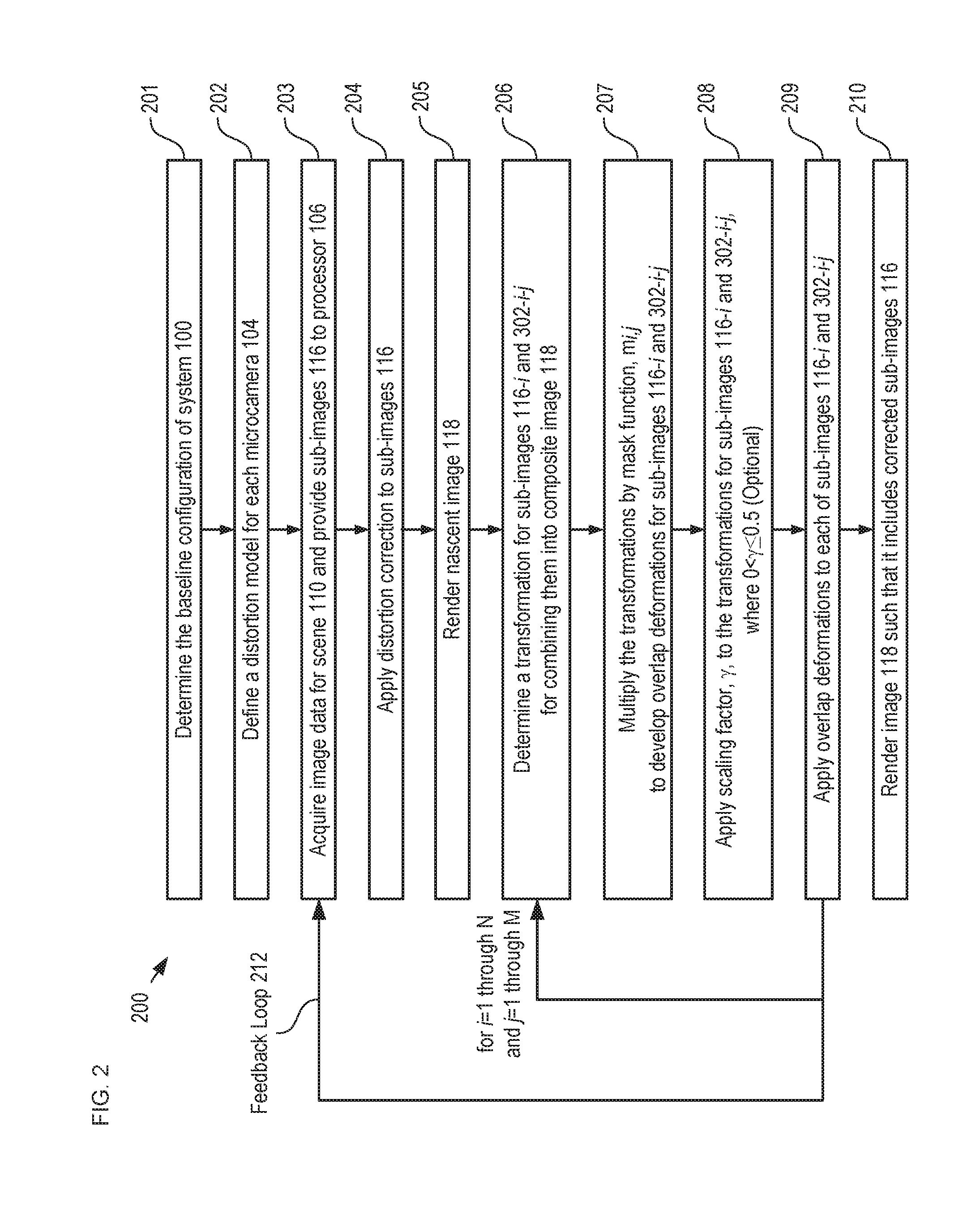Method for combining multiple image fields
a composite image and image field technology, applied in the field of imaging, can solve the problems of increasing the difficulty of image a scene with a single camera and fpa, the arrangement of the cameras used to generate the sub-images is subject to perturbation, and the image processing is challenging
- Summary
- Abstract
- Description
- Claims
- Application Information
AI Technical Summary
Benefits of technology
Problems solved by technology
Method used
Image
Examples
Embodiment Construction
[0025]FIG. 1 depicts a schematic drawing of an imaging system in accordance with an illustrative embodiment of the present invention. System 100 is a monocentric-lens-based multiscale imaging system that comprises objective lens 102, microcameras 104, and processor 106.
[0026]One skilled in the art will further recognize, after reading this Specification, that the present invention is suitable for use with any optical system employing multiple cameras and / or FPAs, such as multiscale imaging systems having objective lenses that are not monocentric, non-multiscale imaging systems that include arrangements of individual cameras, arrangements of individual telescopes, etc. Examples of multiscale imaging systems suitable for use with the present invention are described in detail in U.S. Patent Publication Nos. 20130242060, 20140192254, and 20140176710, as well as U.S. Pat. No. 8,259,212, each of which is incorporated herein by reference.
[0027]System 100 is analogous to multiscale imaging ...
PUM
 Login to View More
Login to View More Abstract
Description
Claims
Application Information
 Login to View More
Login to View More - R&D
- Intellectual Property
- Life Sciences
- Materials
- Tech Scout
- Unparalleled Data Quality
- Higher Quality Content
- 60% Fewer Hallucinations
Browse by: Latest US Patents, China's latest patents, Technical Efficacy Thesaurus, Application Domain, Technology Topic, Popular Technical Reports.
© 2025 PatSnap. All rights reserved.Legal|Privacy policy|Modern Slavery Act Transparency Statement|Sitemap|About US| Contact US: help@patsnap.com



